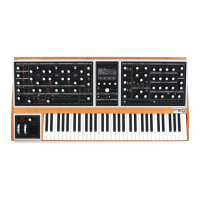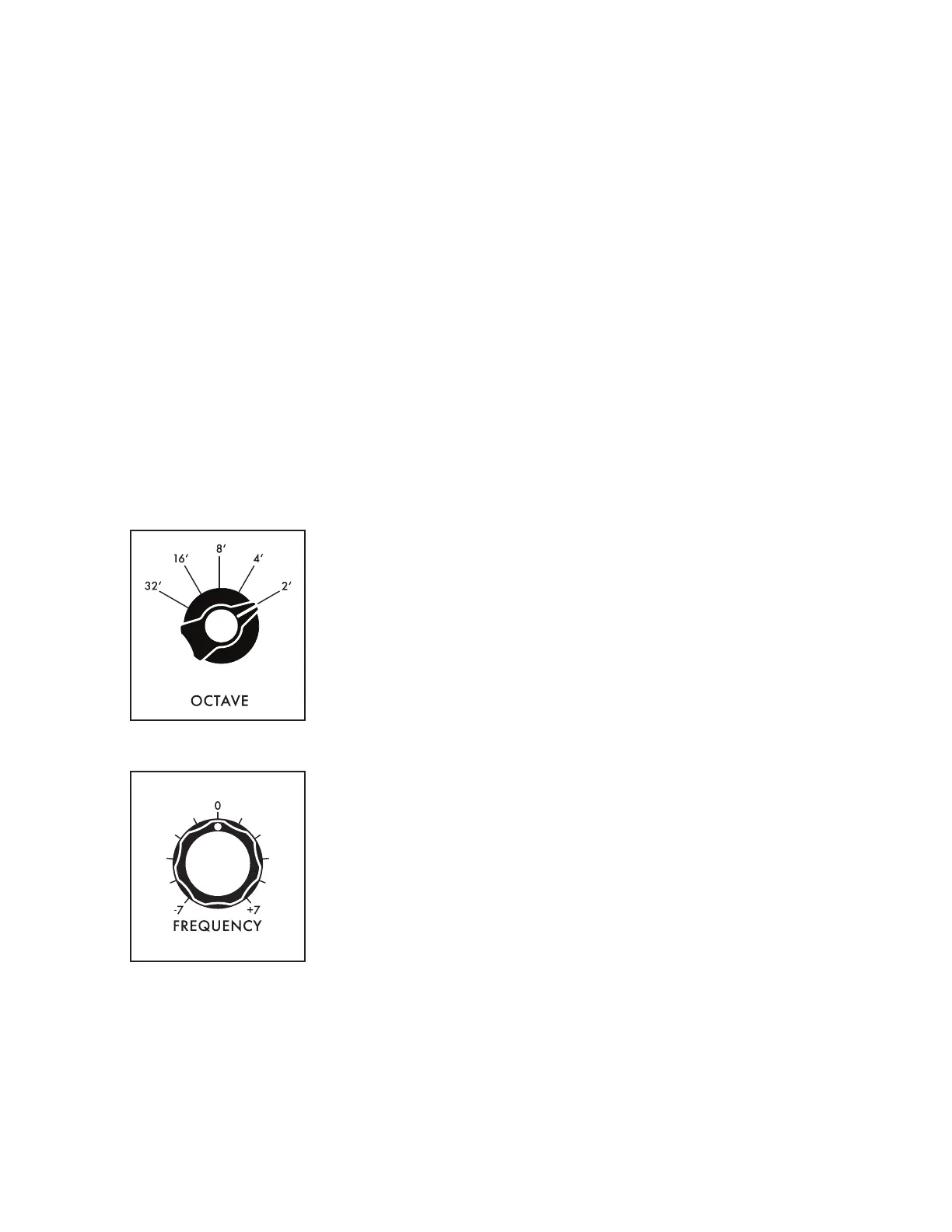22
OSCILLATORS
Oscillators are the primary sound source for any synthesizer. Moog One Oscillators have no physical
moving parts like a guitar’s string or a clarinet’s reed. Instead, the Oscillators generate an electronic
signal that changes direction very rapidly. The patterns created by these uctuations determine the
waveform, or wave shape, which in turn determines the harmonic content of the signal. Moog One
features three independent Oscillators that are nearly identical in design.
Each Oscillator generates two waveforms simultaneously; these can be blended via a dedicated
MIX control into a single complex, composite wave. For the rst waveform, either a Triangle or
Sawtooth wave can be chosen. Applying the WAVE ANGLE control to the Triangle wave can change
the symmetry of the waveform, allowing the Triangle to reach a Ramp or Sawtooth shape at either
extreme. Applying the WAVE ANGLE control to the Sawtooth wave can vary the reset time, delivering
increased harmonic diversity. The second waveform is a Pulse wave with a variable Pulse Width. As
with the PULSE WIDTH knob, the TRI/SAW WAVE ANGLE knob can be modulated from another
controller or parameter.
Together, their combined signals can be used to create an endless array of wave shapes that determine
each Oscillator’s nal sonic output. The OLED screen in the center of each Moog One Oscillator
provides a static image of this composite waveform.
NOTE: The static image displayed on the OLED is created by the Oscillator’s parameter settings only,
and does not reect any real-time modulation routings that may also be affecting the nal waveform.
OCTAVE (32’, 16’, 8’, 4’, 2’)
Rotating the OCTAVE knob will change the pitch of the Oscillator by
octaves. The historical “foot” settings are a musical convention that
relates to pipe lengths on a pipe organ. The 8’ setting is considered
standard, and will pitch the “C” in the middle of the Moog One
keyboard (MIDI Note #60) at “Middle C.”
FREQUENCY (-7 to 0 to +7)
While the OCTAVE knob sets the Oscillator pitch in octave units, the
FREQUENCY knob continuously varies the Oscillator pitch over a range
of +/- 7 semitones (up or down a perfect fth).

